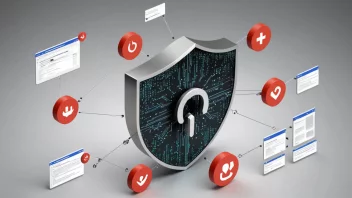Introduction
Digital forensics is an essential field in today’s technologically driven landscape, where incidents such as data breaches, cyber-attacks, and unauthorized access can lead to severe repercussions for organizations. Incident Response Teams (IRTs) play a crucial role in managing these incidents effectively. This article outlines the top 5 key points regarding digital forensics and the significant contributions of incident response teams.
1. Understanding Digital Forensics
Digital forensics is the process of collecting, preserving, analyzing, and presenting electronic data in a manner that is legally admissible. It encompasses a variety of components, including computer forensics, network forensics, mobile device forensics, and cloud forensics, each focusing on different types of digital evidence.
2. The Importance of Incident Response Teams
Incident Response Teams are specialized groups that handle security breaches and other cyber incidents. Their primary goal is to minimize damage and recover from the incident swiftly and effectively. IRTs are often composed of professionals with diverse skills, including forensic analysts, security engineers, and legal advisors, allowing them to respond comprehensively to incidents.
3. Key Components of an Effective Incident Response Plan
An effective incident response plan (IRP) is crucial for any organization. Key components include:
- Preparation: Establishing policies, procedures, and training programs to ensure readiness.
- Detection and Analysis: Implementing tools and processes to identify potential incidents and assess their impact.
- Containment, Eradication, and Recovery: Strategies to isolate the threat, remove it, and restore systems to normal operation.
- Post-Incident Activity: Conducting reviews and updates to improve future responses.
4. Collaboration Between IRTs and Law Enforcement
In many cases, cyber incidents may involve legal implications. Collaboration between IRTs and law enforcement agencies is vital for successful investigations. IRTs can assist in gathering evidence while ensuring that proper protocols are followed to maintain the integrity of that evidence for potential legal proceedings.
5. Staying Ahead of Emerging Threats
The landscape of cybersecurity threats is constantly evolving. Incident response teams must remain vigilant and continuously educate themselves about new vulnerabilities, attack vectors, and forensic techniques. Regular training, participation in cybersecurity forums, and keeping abreast of industry trends are essential for effective threat response.
Conclusion
Digital forensics and incident response are intertwined fields critical for protecting organizations from cyber threats. Understanding the fundamental aspects of digital forensics, the importance of incident response teams, and how they can effectively collaborate to combat emerging threats is essential for any organization aiming to secure its digital assets.






